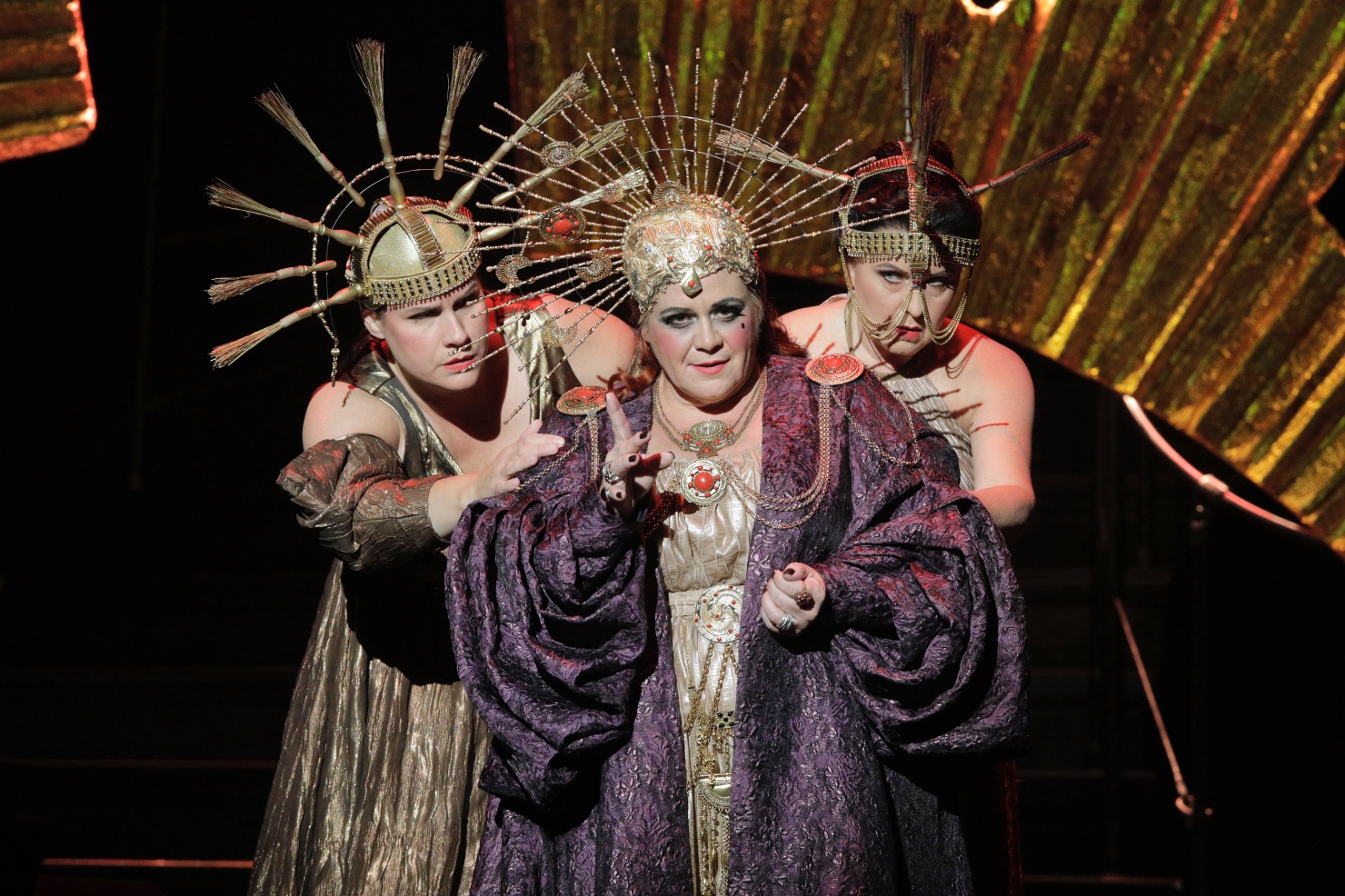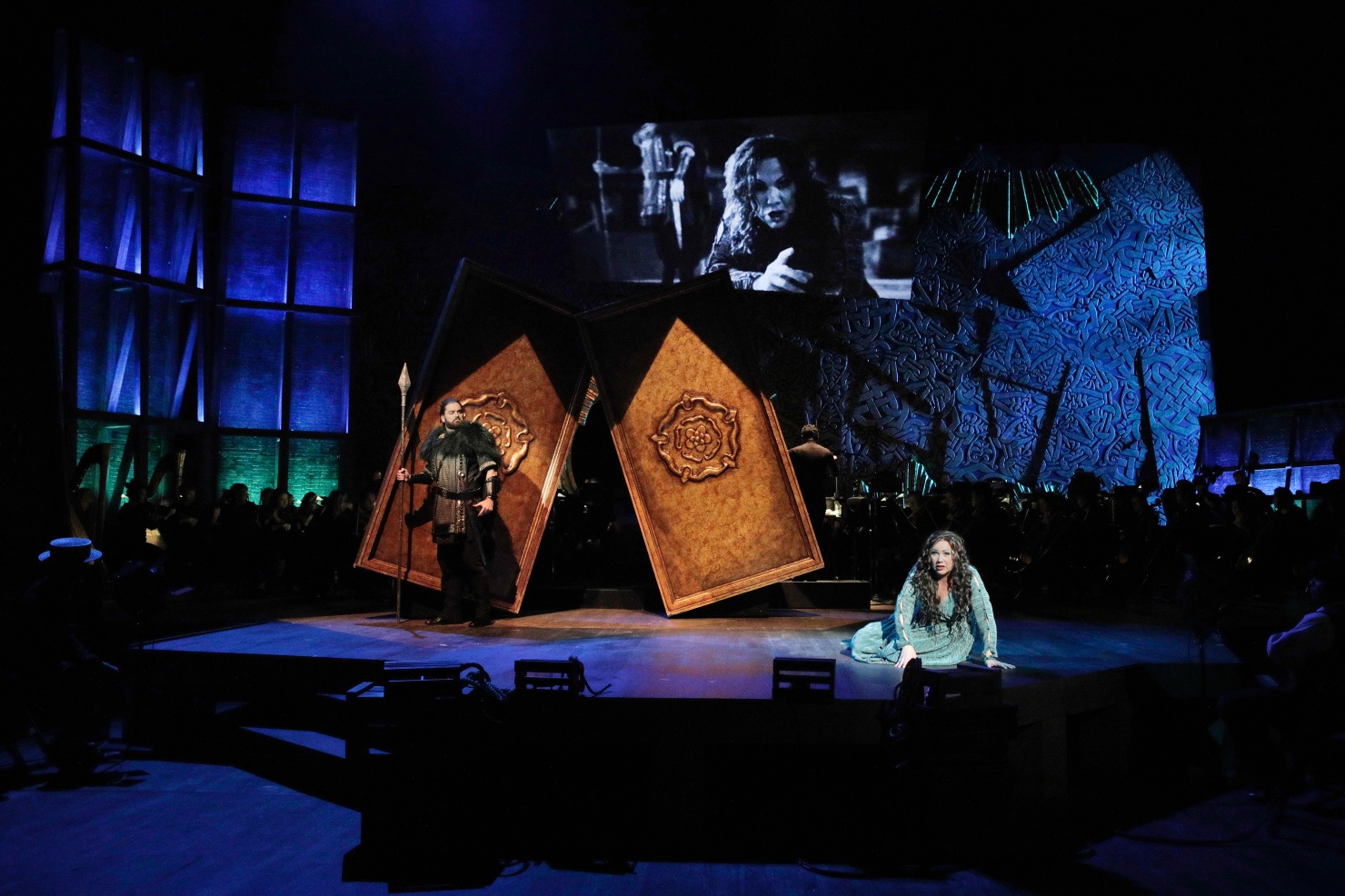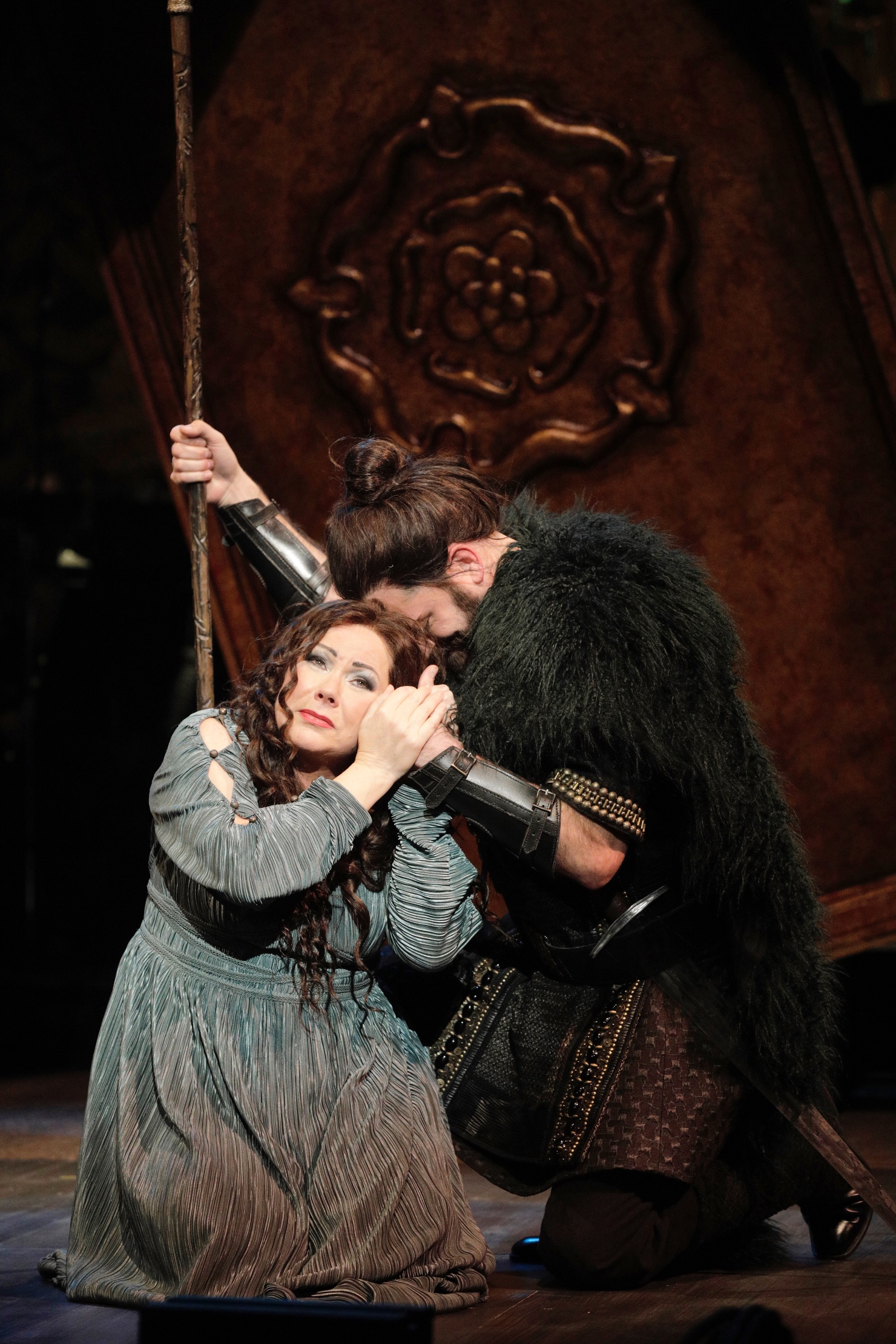
Greek tragedy meets Sunset Boulevard: Minnesota Opera's new Elektra
ReviewMinnesota Opera opens its 52nd season this weekend with Richard Strauss’ Elektra. The true stars of the night are the 85-piece orchestra, passionately led by Elias Grandy and playing with a rich and sustained intensity. The orchestra is onstage, displaced by the film crew in the pit.

Singing the title character is Sabine Hogrefe, a veteran of this opera who brings her Elektra worldwide. She approaches the character with the extreme drama that this tragedy deserves. There is good chemistry between Hogrefe’s Elektra and Marcy Stonikas as her sister, Chrysothemis.
Victoria Vargas, known in at the company for her big and small roles at MO over the years, brings her solid technique and rich voice to the maidservants’ first scene. Oreste is sung by Craig Irvin.
Most opera-goers don’t come to sit and watch a screen in silence, and I kept waiting for the orchestra to chime in.
We meet the omnipresent director of the fictional film. In a thick German accent, he introduces the opera and his film, and reminds the audience to silence their cell phones. Action begins onstage fifteen minutes before the official 8pm start time, with film crew getting set and scenes being rehearsed. This prologue is about immersing the audience in the layered story-within-a-story device; it’s a little reminiscent of Ariadne auf Naxos, with comic antics from the film crew.

Original footage from Helena de troya, directed by Manfred Noa, is shown for the first five minutes, completely silently; and it was slightly uncomfortable. Most opera-goers don’t come to sit and watch a screen in silence, and I kept waiting for the orchestra to chime in. This screen stays up in the first scene to show the footage made for this production, which is certainly an interesting dramatic device.
The creative team certainly believes in the effectiveness of the film medium.
Throughout the drama the projected film has a few purposes. It shows what is about to happen offstage; in the maids’ scene one of the servants is led offstage to be beaten, and we get to witness that on the screen. During Elektra’s entrance scene, the screen projects what was occurring currently on the stage, making it look as though the singers were lip-syncing. This is an odd in my opinion, but it achieves the larger-than-life drama that all Greek classics demand.
The cinematic display shows what the characters fantasize about in the immediate future. After the two murders, Oreste and his sisters are shown embracing and rejoicing in the palace together. But in the reality of the plot of the film and Strauss’ opera, that never occurs.

Interestingly, the audience sees the singers transition from their Elektra characters to play playing silent film actors, coming out of their dramatic scenes and “regrouping”, smiling at the director, being kissed on the cheek by colleagues or giving handshakes.
The creative team certainly believes in the effectiveness of the film medium. I think it could have been trimmed a bit. Notably with the meandering dolly carrying a camera and two directors throughout the opera, the concept sometimes distracted from the artists on stage.

In fact we first see Elektra “off-camera” in a turban and dressing gown, giving off a distinctly Norma Desmond image. In fact, the framing of her death at the conclusion of the drama has elements of Sunset Boulevard as well.
We see Elektra becoming more and more immersed in the violent obsessiveness of her character.
In Strauss’ opera, Elektra’s plot succeeds and she begins to dance in victory, but drops dead with the final chords of the opera. The same happens on the film set, but as the last moments of the music ring out, the production team stops and everyone realizes that the actress is actually dead… And blackout on sombre confusion.

I like this ending, because as the opera goes on, we see Elektra becoming more and more immersed in the violent obsessiveness of her character. On one occasion, she is led off-camera by some crew; as the camera is then pointed on some other action, and there is Elektra, wielding the axe lustfully. The director notices what she is doing, snatches the axe away, and leads her back to her mark for the next scene.

The parallel layers of a Greek character going mad and dying, and an artist being driven to death by her character were interesting to watch. But to make the latter more compelling, I think there needed to be more background on the actress and what factors may have contributed to her death. But interesting, nonetheless.


Comments